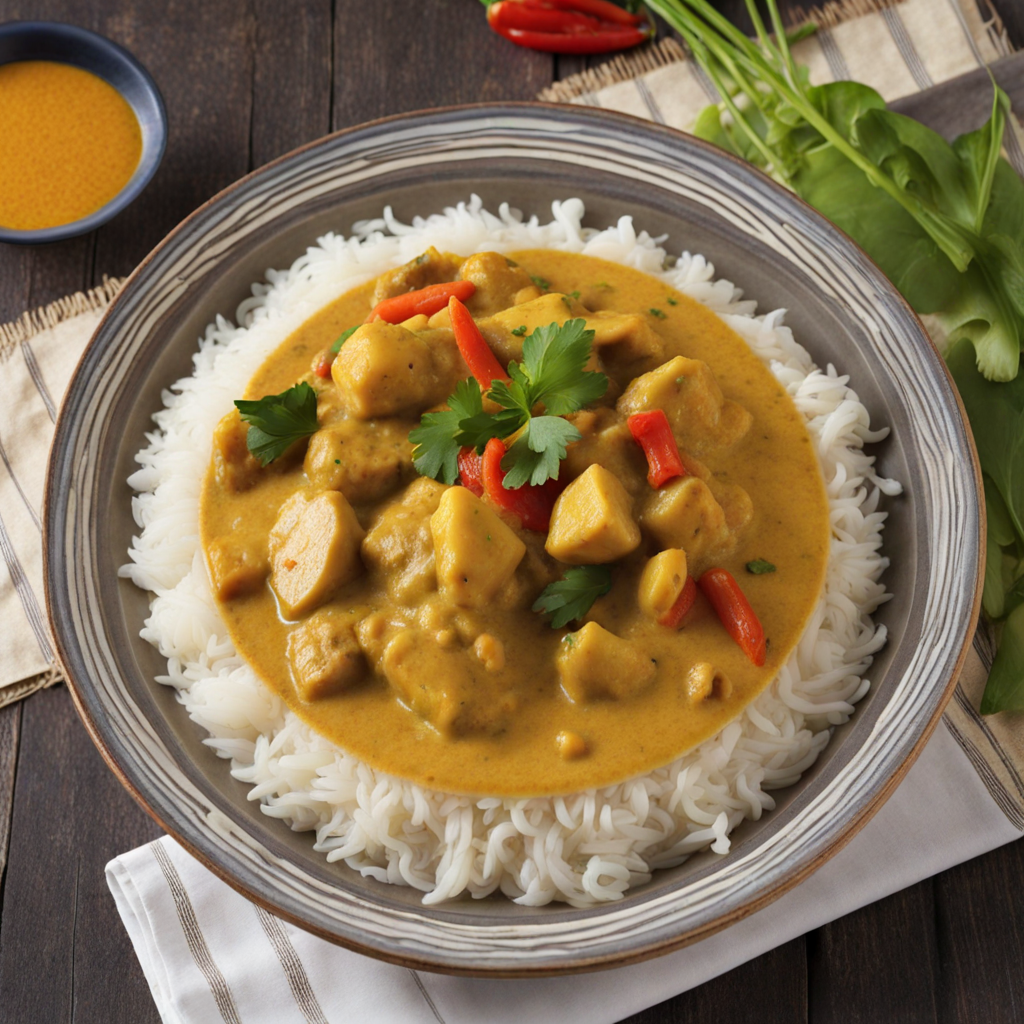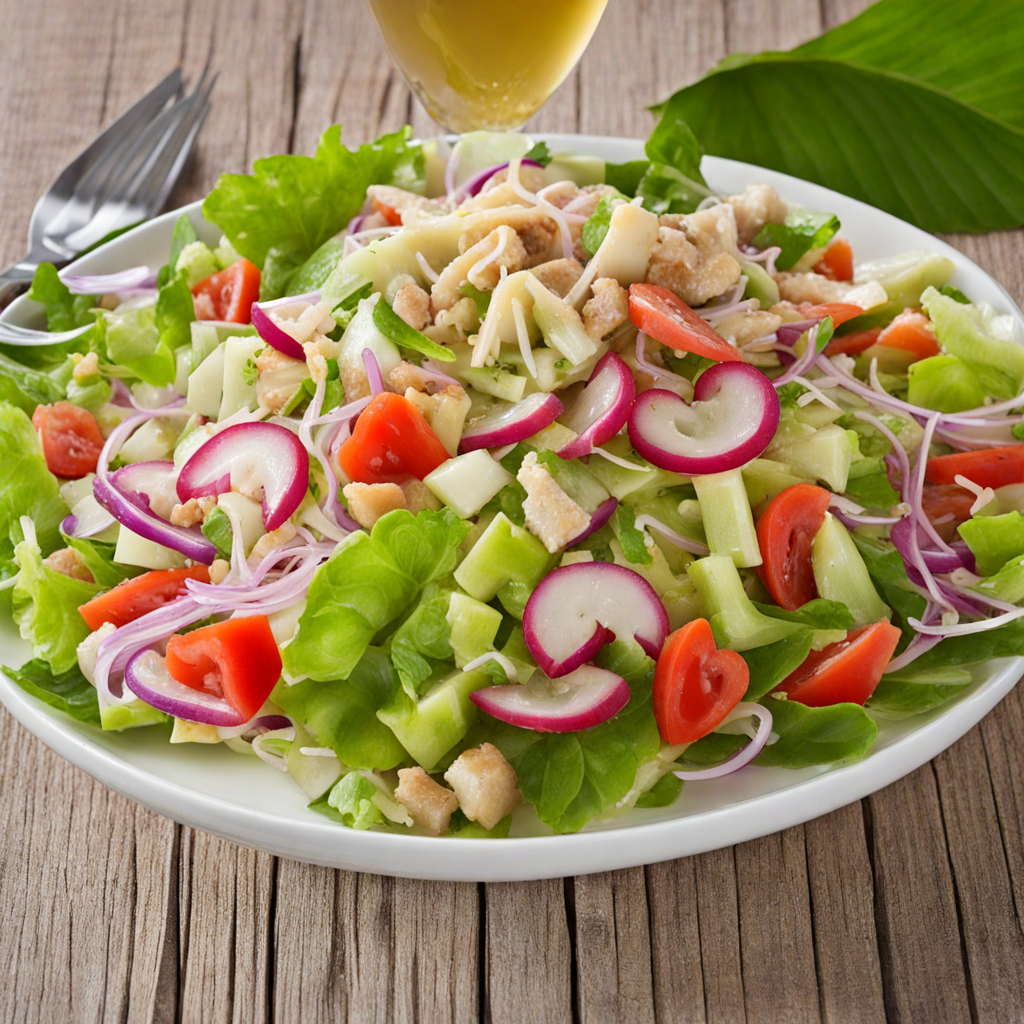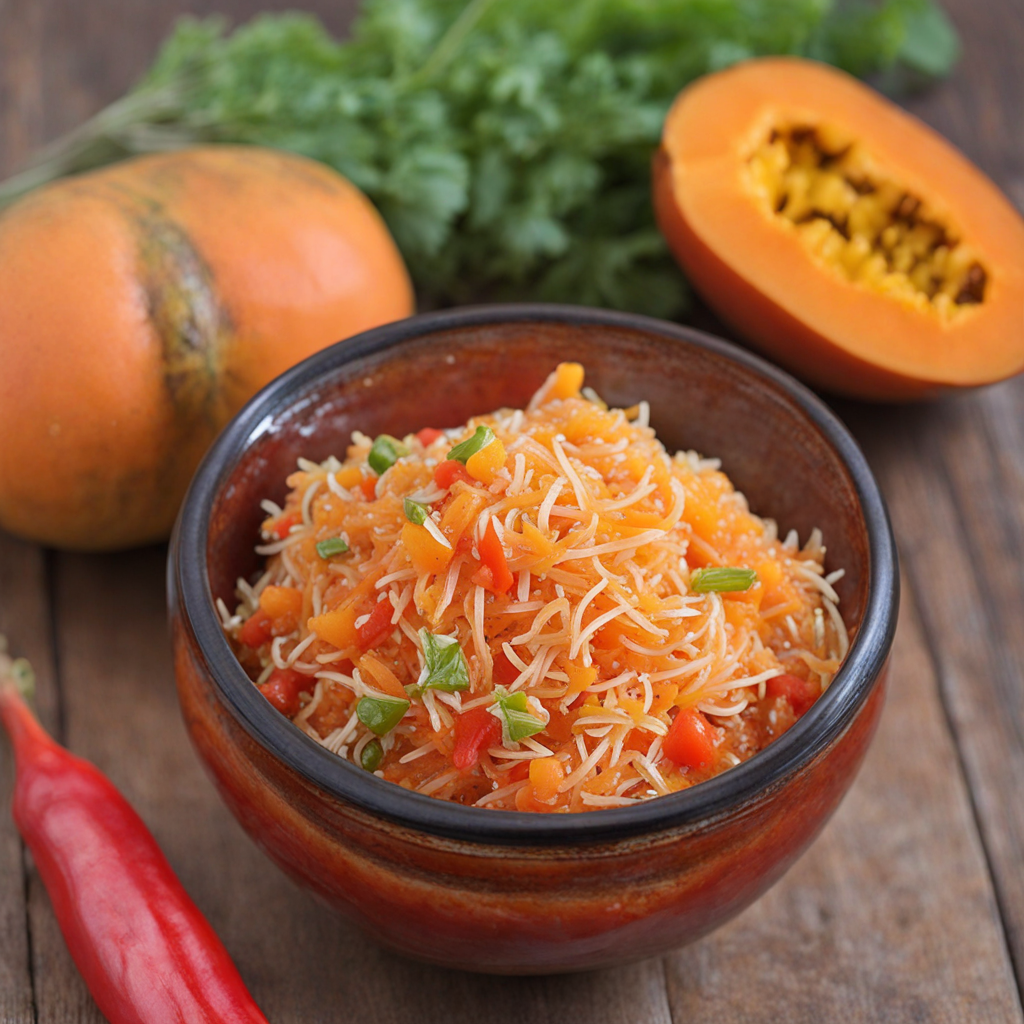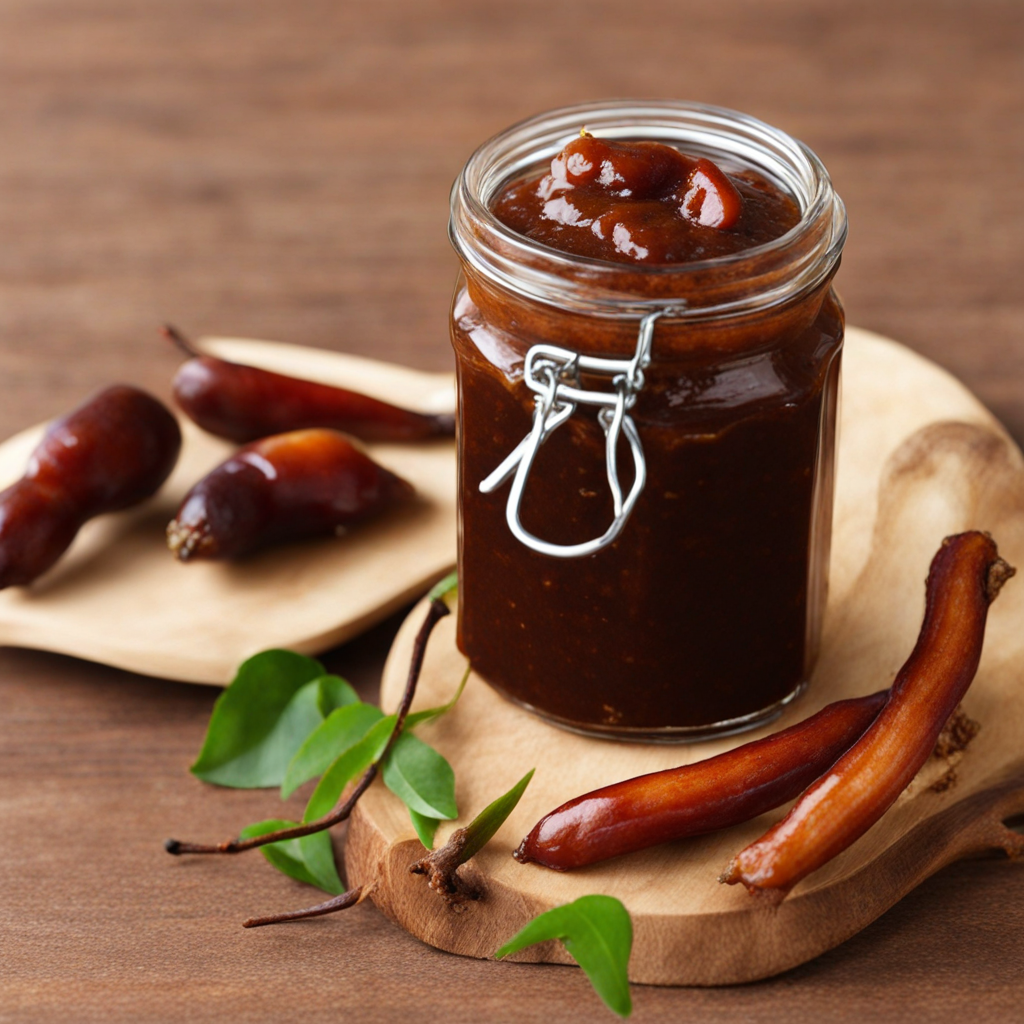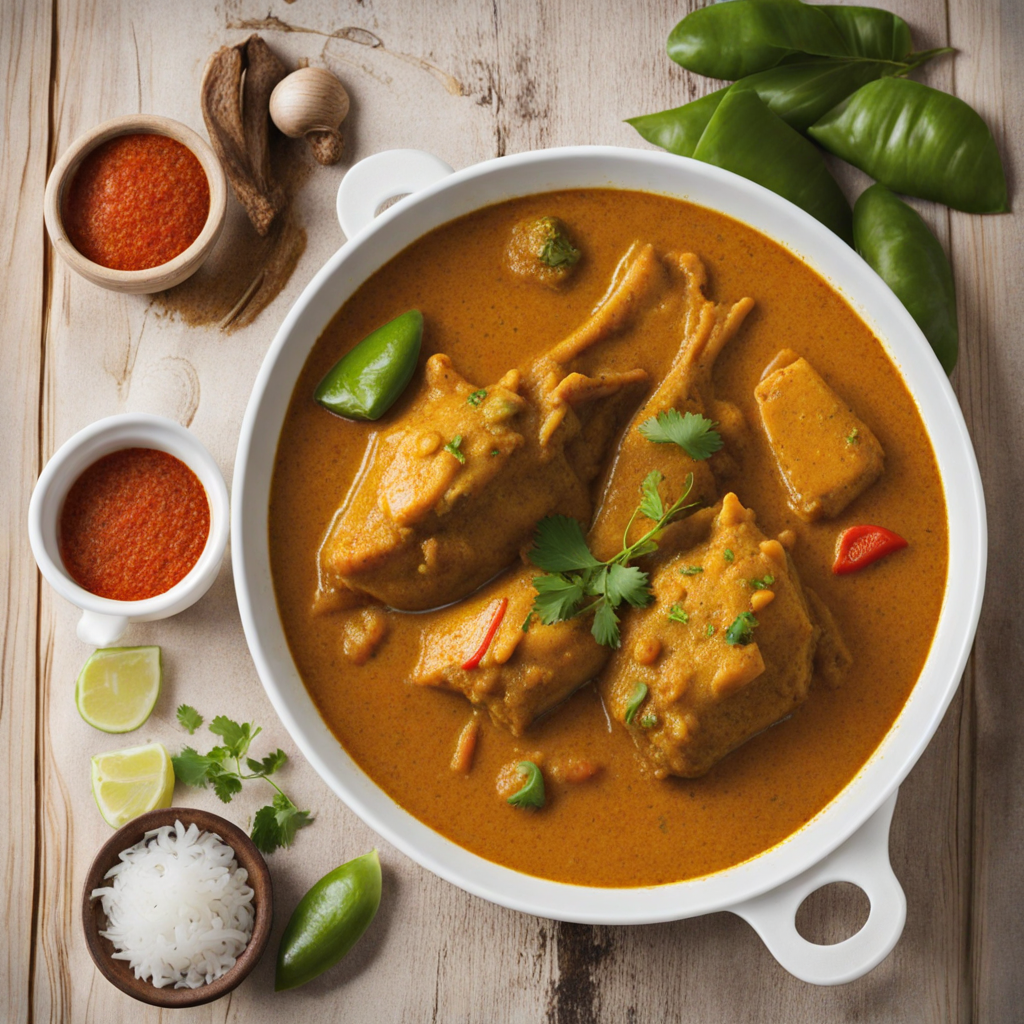Coconut Curry
Coconut Curry from Seychelles is a vibrant and aromatic dish that beautifully showcases the island's tropical flavors. The base of the curry is a rich and creamy coconut milk, which provides a luscious texture and a subtle sweetness that balances the spices. Freshly grated coconut often adds an extra layer of flavor, enhancing the dish’s authenticity. The curry is typically infused with a medley of spices such as turmeric, ginger, garlic, and chili, creating a warm and inviting aroma that tantalizes the senses. In Seychelles, seafood plays a pivotal role in the culinary scene, and Coconut Curry often features a variety of fresh fish or shrimp, which soak up the fragrant sauce. The seafood is cooked to perfection, remaining tender and flaky, while the spices and coconut meld together, creating a harmonious blend of flavors. Vegetables like eggplant, bell peppers, and green beans may also be incorporated, adding color and nutritional value to the dish. Served hot, Coconut Curry is typically accompanied by a side of fluffy rice or traditional bread, allowing diners to savor every drop of the creamy sauce. The contrasting textures and flavors make each bite a delightful experience, as the heat from the spices mingles with the coolness of the coconut. This dish is not just a meal; it’s a celebration of the rich culinary heritage of Seychelles, inviting food lovers to explore the unique fusion of flavors that define this tropical paradise.
How It Became This Dish
The Culinary Journey of Kari Kok: A Taste of Seychelles Introduction Kari Kok, a fragrant and flavorful dish from the Seychelles, encapsulates the archipelago's rich cultural tapestry and diverse culinary influences. This unique curry, primarily made with chicken or fish, showcases the fusion of African, French, Indian, and Chinese culinary traditions that characterize Seychellois cuisine. To understand the significance of Kari Kok, we must explore its origins, cultural importance, and its evolution over time. #### Origins: A Melting Pot of Cultures The history of Kari Kok is deeply interwoven with the Seychelles’ colonial past and its position as a crossroads of global trade. The islands were uninhabited until the late 18th century when French settlers established plantations and brought enslaved Africans to work the land. This initiated a cultural exchange that would shape the islands’ identity. The term "Kari" itself is derived from the Indian word "kari," which means "curry." The influence of Indian cooking methods and spices, introduced by laborers from India, is evident in the dish. The use of coconut, a staple ingredient, reflects the islands' abundant natural resources and the culinary practices of the African slaves who adapted their cooking to incorporate local ingredients. As the British took control of the islands in the 19th century, further waves of migration brought in Chinese and European influences. The result was a diverse culinary landscape where flavors and techniques merged. Kari Kok, with its combination of spices, coconut milk, and fresh seafood or poultry, embodies this convergence. #### Cultural Significance Kari Kok is more than just a dish; it represents a sense of community and identity among the Seychellois people. In the Seychelles, food is an integral part of social life, often associated with communal gatherings and celebrations. Kari Kok is a staple at family feasts, weddings, and festive occasions. The preparation and sharing of this dish serve as a means of bringing people together, reinforcing social bonds, and honoring shared heritage. The dish is often accompanied by rice, which is a fundamental component of Seychellois meals. The combination of Kari Kok and rice symbolizes nourishment and hospitality, reflecting the islands’ culture of welcoming guests with open arms. Moreover, the use of local ingredients such as fresh fish, chicken, and spices not only highlights the bounty of the sea and land but also emphasizes sustainability and the importance of using what is locally available. #### The Evolution of Kari Kok Over the years, Kari Kok has evolved while maintaining its essential characteristics. In the early days, the dish was primarily made with simple, locally sourced ingredients, with families often relying on traditional recipes passed down through generations. However, as tourism began to flourish in the Seychelles in the late 20th century, the culinary landscape began to shift. Chefs and home cooks alike started experimenting with Kari Kok, introducing variations that catered to international palates while still preserving the essence of the original dish. Today, it is common to find Kari Kok made with different proteins, such as octopus, prawns, or even vegetarian alternatives, reflecting the growing interest in plant-based diets. The global culinary scene has also influenced Kari Kok’s presentation. While traditionally served in a rustic style, modern interpretations may involve garnishes and artistic plating, appealing to tourists and locals who dine in upscale restaurants. This fusion of traditional and contemporary approaches has allowed Kari Kok to remain relevant in an ever-changing culinary world. #### Ingredients and Preparation The core ingredients of Kari Kok typically include chicken or fish, coconut milk, onions, garlic, ginger, and a variety of spices, such as turmeric, cumin, coriander, and chili. Each family may have its own secret blend of spices, emphasizing the personal touch that is so vital in Seychellois cooking. The beauty of Kari Kok lies in its adaptability; cooks can modify the spice levels according to their preferences, allowing each version of the dish to tell a different story. The preparation of Kari Kok usually begins with marinating the protein in a mixture of spices and coconut milk, allowing the flavors to meld. The dish is then cooked slowly, allowing the ingredients to come together in a harmonious blend. The use of coconut milk not only adds richness but also balances the spices, resulting in a dish that is both comforting and invigorating. #### Kari Kok in Contemporary Seychelles In recent years, there has been a revival of interest in traditional Seychellois dishes, including Kari Kok. Local chefs are increasingly recognizing the importance of preserving culinary heritage while also embracing modern cooking techniques. Food festivals celebrating local cuisine have become popular, providing opportunities for chefs to showcase their interpretations of Kari Kok. Additionally, the growth of ecotourism in the Seychelles has led to a renewed emphasis on sustainable practices in both agriculture and fishing. This focus on sustainability has encouraged chefs to source ingredients locally, ensuring that the flavors of Kari Kok remain true to the islands’ natural bounty. #### Conclusion Kari Kok is more than just a dish; it is a vibrant representation of the Seychelles' history, culture, and community spirit. From its origins rooted in a blend of African, Indian, French, and Chinese influences to its modern-day adaptations, Kari Kok continues to evolve while retaining its essential identity. As the Seychelles embraces its culinary heritage, Kari Kok stands as a testament to the islands’ ability to adapt and thrive, inviting both locals and visitors to partake in a rich tapestry of flavors and stories. In every bite of Kari Kok, one can taste the legacy of a people who have woven their diverse histories into a single, delicious dish.
You may like
Discover local flavors from Seychelles



